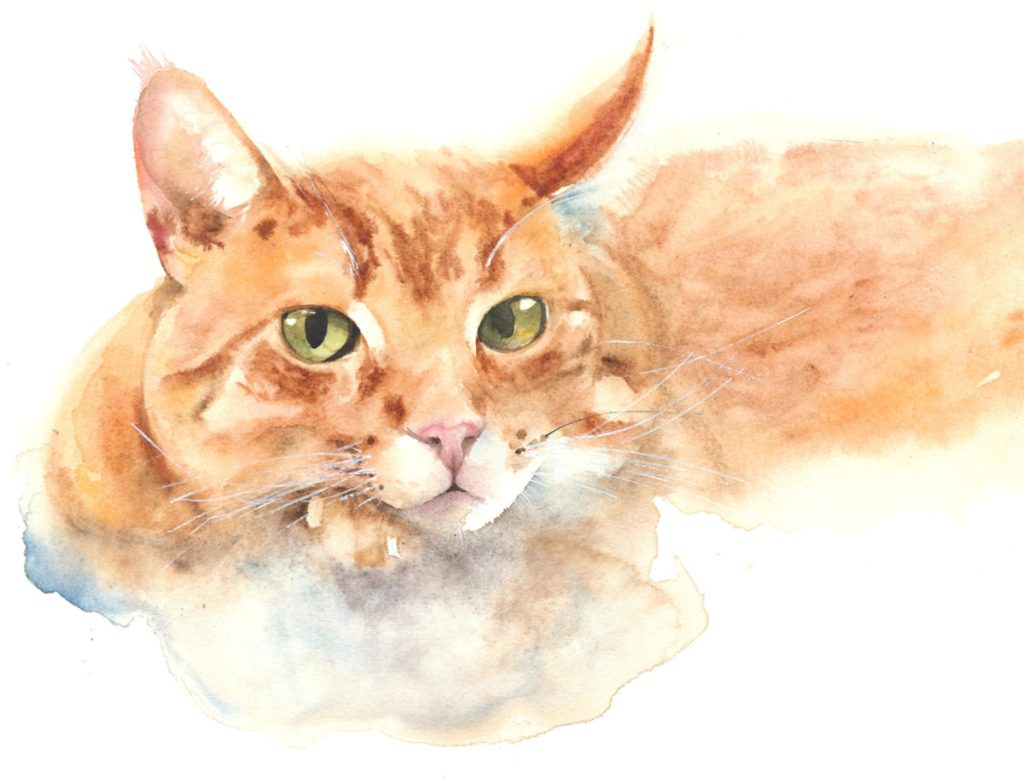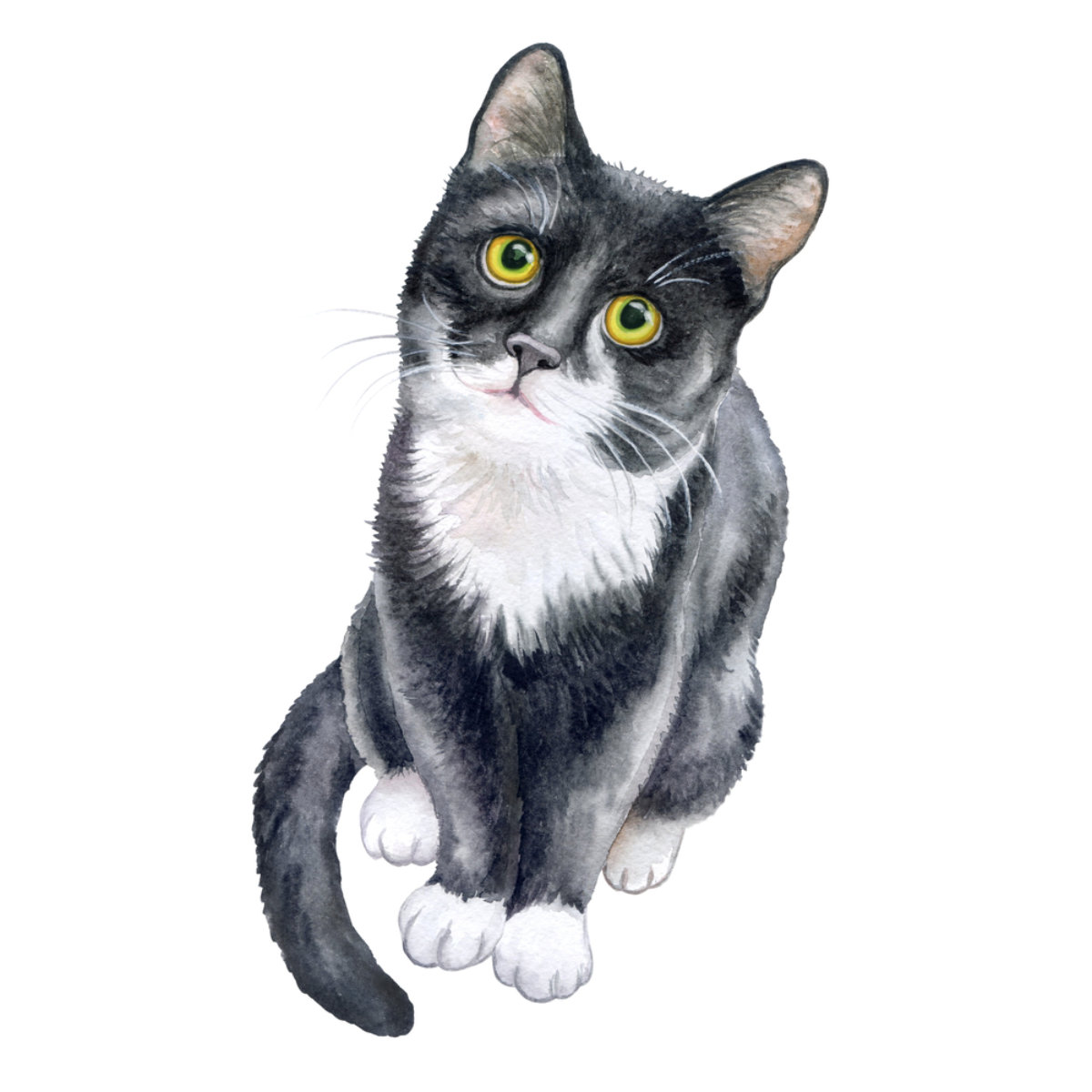Hyperthyroidism
It is a disease caused by excess production of thyroxin, a hormone produced by the normal thyroid gland. The primary function of thyroid hormone is to control the rate that cells function.
Too much thyroid hormone makes cells function too fast. The animal’s metabolic rate can soar to the point where it can burn off more than half its body weight. Left unchecked, liver and heart problems can develop. Excess thyroid function (hyperthyroidism) is rare in dogs but is one of the more common diseases diagnosed in cats older than 8 years of age. It is not known exactly why cats develop hyperthyroidism but, in the majority of cases, it is due to either a benign (or non-cancerous) nodule in one gland or hyperplasia (or enlargement) of one or both thyroid glands. The excess in thyroid hormone usually affects virtually every cell and organ in the body. These organs become overactive as a result.

What are the signs of hyperthyroidism?
There is some variation in clinical signs between cats and most have the condition for some months before signs worsen enough to be concerning, however the hallmark sign is weight loss despite an excellent appetite. Most common clinical signs include marked weight loss, increase in appetite (often ravenous) and an increase in activity level (some cats are persistently restless or nervous, have changes in behavior such as being more irritable or more vocal).
Patchy hair loss or failure to groom, increased water intake or urination may also be seen. Less commonly seen are vomiting and diarrhea, or change in defecation. Relatively uncommon signs include panting, difficulty breathing, loss of appetite, muscle weakness, listlessness and seeking cool places.
How is it diagnosed?
The diagnosis of hyperthyroidism is relatively easy in most cats, with the demonstration of elevated levels of thyroxine or T4 in the blood. If a T4 level is markedly elevated, the diagnosis is clear. Some cats have borderline results and require further testing. A small percentage of hyperthyroid cats do not have a diagnostic blood T4 concentration and, in this situation, your veterinarian may wish to repeat the test in a few weeks, or months.
Because hyperthyroid cats tend to be older and because they tend to have symptoms associated with various non-thyroid-related diseases, additional tests may be recommended to determine the health status of the animal. These may include other blood tests, urinalysis, x-rays and ultrasound examinations.
How is it treated?
Hyperthyroid cats that are not treated become progressively more ill. They frequently experience reduced quality of life through weight loss, muscle deterioration, chronic vomiting or chronic diarrhea. They tend to be quite thin, weak, and are likely to develop life-threatening problems such as heart disease and high blood pressure.
These problems can result in heart failure, sudden blindness or sudden death.
Resolution of this condition is almost always associated with reduction in blood supply to the kidneys. This is not a problem unless the cat already has underlying kidney disease. Reducing the blood supply to the kidneys of these cats may lead to a compromise of their kidney function, which can be more concerning and dangerous than hyperthyroidism.

Three commonly used treatments for Hyperthyroidism are available:
The first option is an oral drug called carbimazole (neo-mercazole). This comes as a pill and works by blocking the production of thyroid hormone. The effects of this drug are completely reversible so if the medication is stopped, the cat quickly returns to the same thyroid state that it had prior to using the medication. Thus, if correcting the hyperthyroidism causes underlying kidney dysfunction to become apparent, the medication can be discontinued or tailored to a dose that may not completely resolve the hyperthyroidism but may also protect the kidneys. This medication usually works best when given twice or even three times daily and is fairly inexpensive.
The main drawback is that some cats are not the best pill takers. It can cause some cats to lose their appetites or vomit. Less common adverse effects include liver damage and decreases in red blood cells, white blood cells and platelets. Rarely, they develop a reaction where they scratch their faces uncontrollably. These effects are not common. Generally this drug is the first or only treatment given to hyperthyroid cats. Cats need to have their T4 levels monitored while on neo-mercazole to ensure they remain within a certain range. This may be done monthly during the initial treatment phase, then every 6-12 months once the hyperthyroidism is under control. This also provides us with the opportunity to monitor kidney function as well. If the cat is too difficult to pill, we can have a similar product compounded as a trans-dermal preparation which can be applied to the skin of the ear.
Surgery can be used to remove the abnormal thyroid glands. It has the potential to resolve hyperthyroidism completely and quickly. However, the surgery is delicate with a chance that other problems may develop as a result, such as calcium deficiencies which can be life threatening without medication. A more significant risk is the age and general health of the cat which has to then undergo an anesthetic and surgery.
Iodine is one of the primary ingredients of thyroid hormone. Radioactive iodine is taken up by the thyroid gland and the radioactivity in the medication destroys the surrounding thyroid cells. A dose of the radioactive iodine kills the overproducing cells without harming any other body functions. This is an extremely effective treatment and can quickly and permanently resolve hyperthyroidism.
Benefits include a cure rate of 90 -95%. It tends to be more expensive and treated cats must remain hospitalized until their body levels of radioactivity are safe. A possible side effect, while very rare, is that the cat may become hypothyroid (have an under-active thyroid gland) after receiving treatment. In such rare cases, these cats need life-long medication to treat the under-active thyroid gland.

